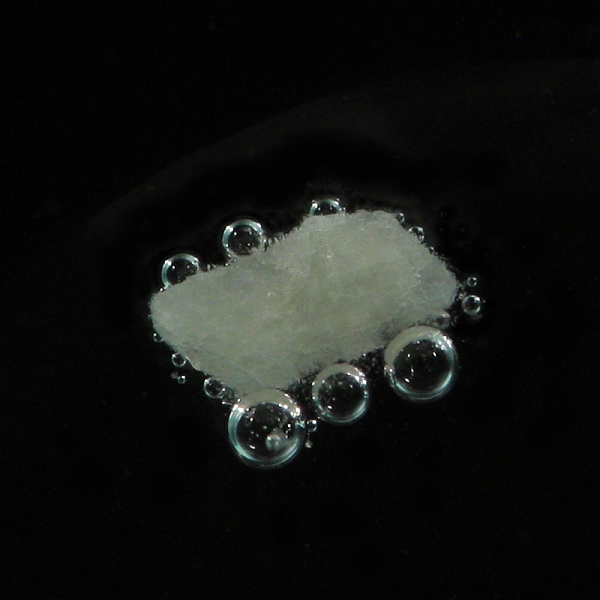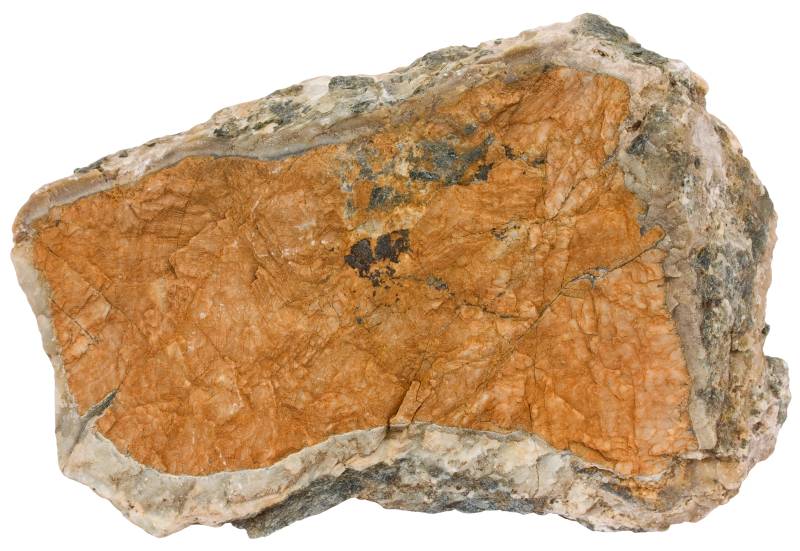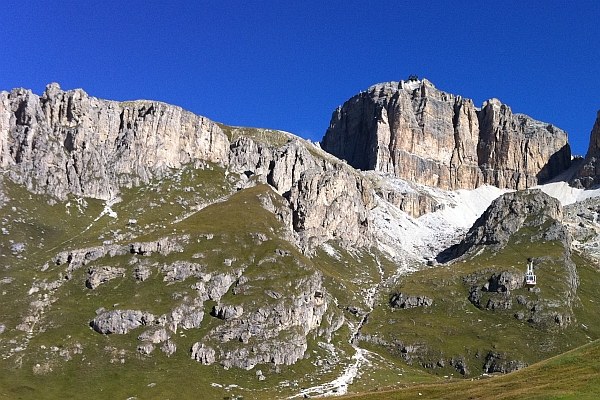Dolomite is a common rock-forming mineral. It is the primary constituent of dolomite rock (dolostone) and dolomarble. It is similar to the most common carbonate mineral calcite. These two share some similarities in structure and are very closely related chemically. Calcite is chemically CaCO3 (calcium carbonate), dolomite is CaMg(CO3)2 (calcium-magnesium carbonate). It means that half of the calcium in the structure of calcite is replaced by the magnesium in dolomite. However, there is no solid solution between the two because calcium and magnesium ions have different size and hence can not replace each other directly in the crystal structure.
http://picasaweb.google.com/107509377372007544953/2015#6196127442973119522
Dolomite may be the sole or primary constituent of marble. Dolomarble from Fauske, Norway. Width of sample 14 cm.
Dolostone is the most important rock type that is composed mostly of it. Dolostone was probably originally limestone which was altered by Mg-bearing water circulating in the rocks. Dolomite does not precipitate out of aqueous solutions like calcite does (in normal circumstances). Carbonate rock is dolostone if at least 50 percent of it is dolomite.
This rock type is very interesting because we still do not understand very well how it formed. Dolostone is also economically important rock type because it contains lots of pores (this is the result of dolomitization) and act therefore as an oil reservoir. Dolomite forms large part of some hydrothermal deposits where beautiful crystals may be found. It is also found in calcareous metamorphic rocks and sometimes even as a primary mineral in igneous rocks.
This mineral very often forms rhombohedral crystals. The same habit is characteristic to calcite as well, but calcite is more commonly anhedral. This is good to know because it is one of the most important characteristics that helps to identify the mineral. It is a carbonate mineral and hence reacts with dilute hydrochloric acid like calcite and aragonite. However, the reaction with cold acid is not nearly as vigorous. Small sand grain composed of calcium carbonate takes generally 30 seconds or more to dissolve in dilute HCl (10%). Dolomite needs 10 minutes or even more. However, this acid test may still sometimes yield false results. Another way to distinguish between the two is to use organic dye alizarin red S which turns calcite bright red, but does not affect dolomite.
http://picasaweb.google.com/107509377372007544953/Rocks#5805070920815852402
Dolomitic sand grain with characteristic rhombohedral shape measuring approximately 1.5 mm.

The same crystal, but here it is covered with acid. The bubbles contain carbon dioxide that escaped when the crystal structure broke up.
Using hydrochloric acid may not be a foolproof method to differentiate between dolomite and calcite, but it is tremendously useful in field studies to quickly determine whether the cement of clastic rocks is carbonate or not and it is also very useful in the study of sand samples. I often pick yellowish grains out of sand if I am not sure whether it is a badly worn out biogenic grain or feldspar for example. I just need to put one grain into a drop of acid on a glass slide and the answer is right there.
How common is it in sand? Not really common. It is a common cementing mineral in sandstone, but dolom. as a sand grain will not last very long. Dolomitic sand grains may form important part of some lithic sands which are the disintegration products of carbonate rocks nearby. The grain in the picture above is from Namibia. It is part of a very interesting blue colored sand composed mostly of sodalite.

Dolomite in anorthositic granulite host rock. Bergen, Norway. Width of sample 13 cm.

This mountain range in Northern Italy is largely composed of dolomite rock and is appropriately called the Dolomites.
Another good, quick way of distinguishing calcite from dolomite is with a solution of alizarin red-S (an organic dye). Alizarin turns calcite bright red, but doesn’t affect dolomite. This is especially useful in cases where there is a mixture of calcite and dolomite in the same sample; HCl will make everything fizz, but alizarin will show exactly how much calcite and dolomite you have, without destroying the evidence.
Howard, good to know. I’ve read littlebit about it but have no experience so far.